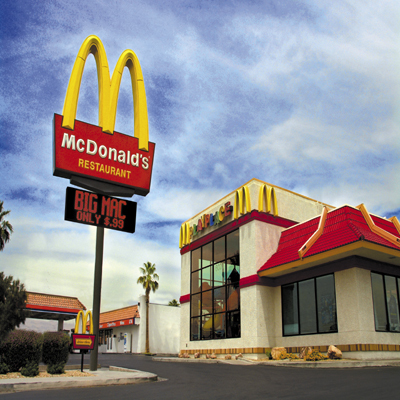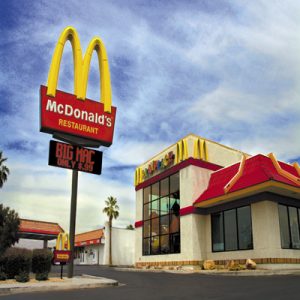On top of an already looming recession, the crisis of September 11 has created an atmosphere of fear and uncertainty. For industries deriving business from discretionary spending budgets, finding new sales opportunities will be a challenge in the immediate future. Such is certainly the case for the moving-message industry.
History has shown that uncertainty has a powerful, negative effect on advertising spending. For the current year, prior to the cataclysmic events of early September, advertising spending was already down significantly, compared to the previous year. As a subset of the advertising industry, the electronic-message-display industry is likely to take a hit.
Thus, it’s time to retrench. Our approach to the marketplace dictates a great deal of forethought that’s unnecessary during less troubling times.
Many traditional message-sign users, such as hotels and shopping centers, are suffering profound setbacks, although there are strong exceptions to that rule. The question then becomes, who might buy message signs during a downturn, and why?
Seize the momentum
The booming economy of the ’90s hasn’t lost all its wind. Momentum remains from deals made prior to the downturn. Current retail projects under construction include pharmacies, fast-food franchises, casinos, convenience stores and supermarkets. Each of these highly competitive industries maintains an appetite for electronic-sign advertising. The impending drop in new construction makes these projects critical.
Advertisement
Those involved in signing these new buildings should introduce, or re-introduce, electronic-sign advertising to customers as a vital competitive tool in the market-share fray.
Go back to the basics with your customers — reaffirm traffic count, translate that count into exposures per month and compare that exposure to other media opportunities. Remind the customer that current crises have motivated Americans to stay close to home, and message-center signs effectively reach people in their primary, "close to home" market. Electronic-message ads reach a point-of-purchase audience ready to act on an impulse generated by the ad.
Evaluate your market
Keep your eyes and ears open. Utilize nonproductive time to speak with customers and prospects. Ascertain who’s suffering, who’s maintaining and who’s doing well. Remember that every economic disaster means an opportunity for somebody. Likewise, a disaster in certain geographic regions might be less impactful in others.
The gaming industry is an excellent example. Las Vegas faces a catastrophe — air travel is key to its survival. Consequently, since September 11, business has dropped sharply. For the weekend of September 21-23, hotel reservations dropped 50%. Cab operators announced a 75% reduction
Conversely, Atlantic City, a drive-in gaming city, is booming. In the heart of the East Coast megalopolis, Atlantic City casinos are well positioned to draw patrons who might otherwise fly to Nevada. Likewise, new regional gaming centers will benefit from air-travel reluctance. in business. Lay-offs were prevalent at casinos and ancillary businesses that depend on tourists.
Advertisement
While high-end retail businesses and restaurants may suffer, discounters in each category are likely to grow. People must eat, wear clothing and purchase staples of human existence. During the September 14-16 weekend, retail business reported sharp declines. Yet, during the same period, WalMart and K-Mart remained steady.
While either chain might be a difficult moving-message sale for reasons other than the economic climate, smaller discount retailers and fast-food franchisees could capitalize on on-premise electronic advertising as their markets become more competitive.
McDonald’s has recently begun implementing electronic-marquee technology. The low purchase price and operating cost of LED, in tandem with the clean look and dependability of new systems, make excellent upgrades to manual-letter marquee signs.Donald’s franchisee can react immediately to market demands, product availability and competitors’ specials by directly focusing "eye catching" features at the passing mobile public. Other fast-food franchises have sporadically experimented with moving-message signs. All are great moving-message candidates.
Pharmacies represent another major emerging market. Drugstores have evolved into broad-based retail outlets. The "mom and pop" stores are all but gone, replaced with chain operations with a highly sophisticated marketing scheme. Walgreen’s is a perfect example. In many markets, faced with intense competition, Walgreen’s has embraced LED marquee signs at their high-traffic locations as viable, on-premise marketing media.
Petroleum retailers and their convenience-store subgroup will be another probable market. Selling gasoline via retail outlets is a tricky, price-sensitive business. Pricing changes daily. Without the ability to change gas-price signs immediately, a retailer may suffer staggering losses.
Therefore, many outlets are replacing plastic-letter signs with electronic-message signs. Regional dealers are opportune candidates for electronic-message or price-changer systems. Many are already converting.
Advertisement
Finally, moving-message displays are proliferating on billboards. Certainly, outdoor advertising is suffering the same downturn as all other advertising. However, numerous outdoor advertising companies are focusing on their select sites by adding moving-message signs.
In the western United States, two different mortgage lenders are using full-color LED as a changing medium that impacts consumers. Other financial institutions advertise interest rates on cluster-style LED text displays. Lotteries have been another major buyer of billboard-based, moving-message displays.
For regions suffering from high-energy costs, LED replacements in high-voltage lamp displays have become more enticing. Nothing beats saving money during times of financial difficulty. As previously discussed in this column, many high-voltage displays are expensive enough to operate that dramatic savings can occur by converting to LED. By offering to lease this upgrade, customers can document savings the first month without out-of-pocket investment.
The bottom line is this — you can sell moving-message displays despite our world crisis. Businesses continue to operate, and the successful ones strive to draw in customers. The key is to work smarter and harder to find those prospects best served by our products. Crank up those creative juices, study business trends and keep an eye out for market potential. Study both the flourishing and failing industries. Study survivors’ strategies and determine how moving-message displays impact their game plans. Good hunting.


 Photo Gallery2 weeks ago
Photo Gallery2 weeks ago
 Ask Signs of the Times2 weeks ago
Ask Signs of the Times2 weeks ago
 Paula Fargo1 week ago
Paula Fargo1 week ago
 Real Deal5 days ago
Real Deal5 days ago
 Photo Gallery1 week ago
Photo Gallery1 week ago
 Women in Signs2 weeks ago
Women in Signs2 weeks ago
 Projects5 days ago
Projects5 days ago
 Women in Signs2 weeks ago
Women in Signs2 weeks ago

















